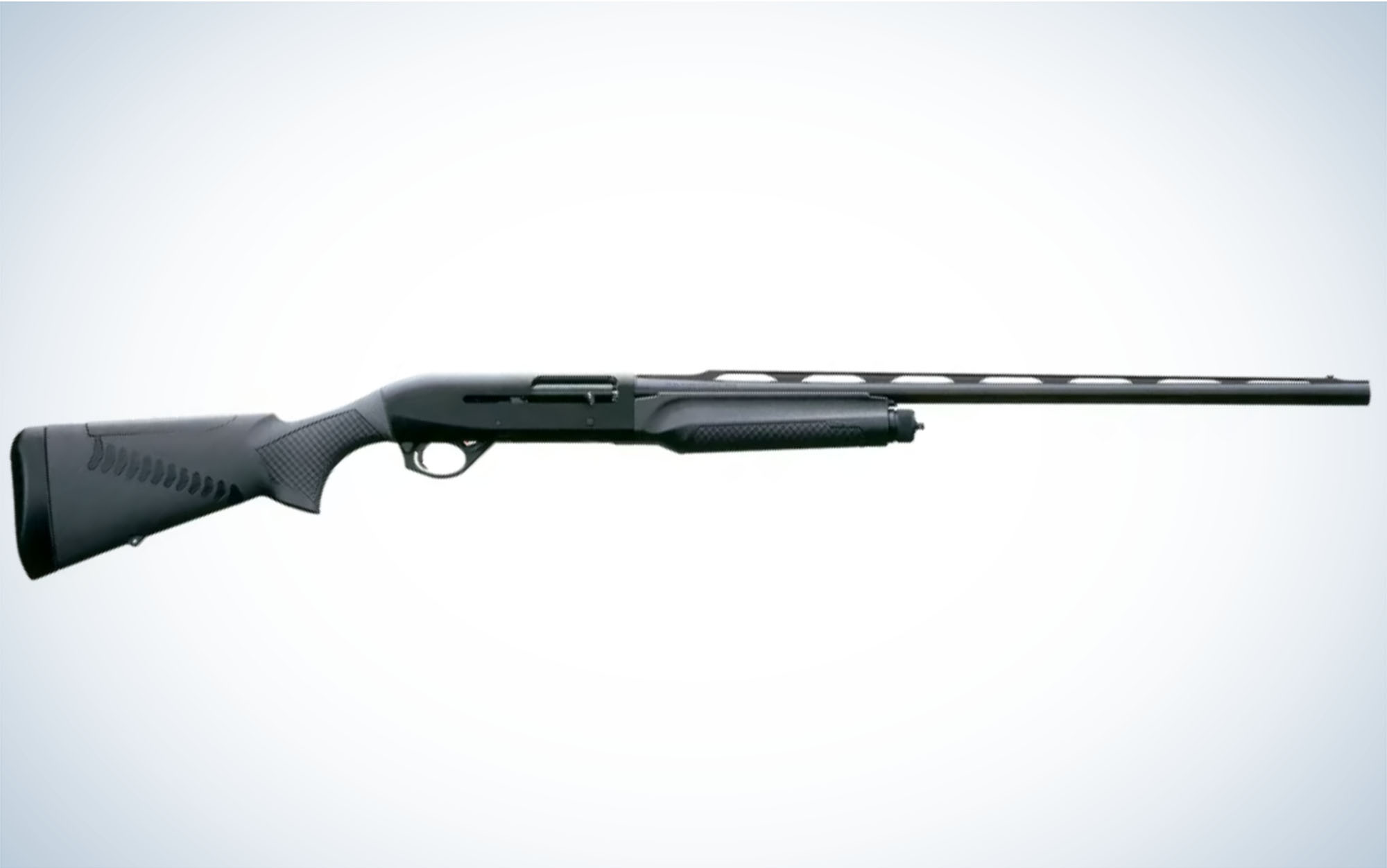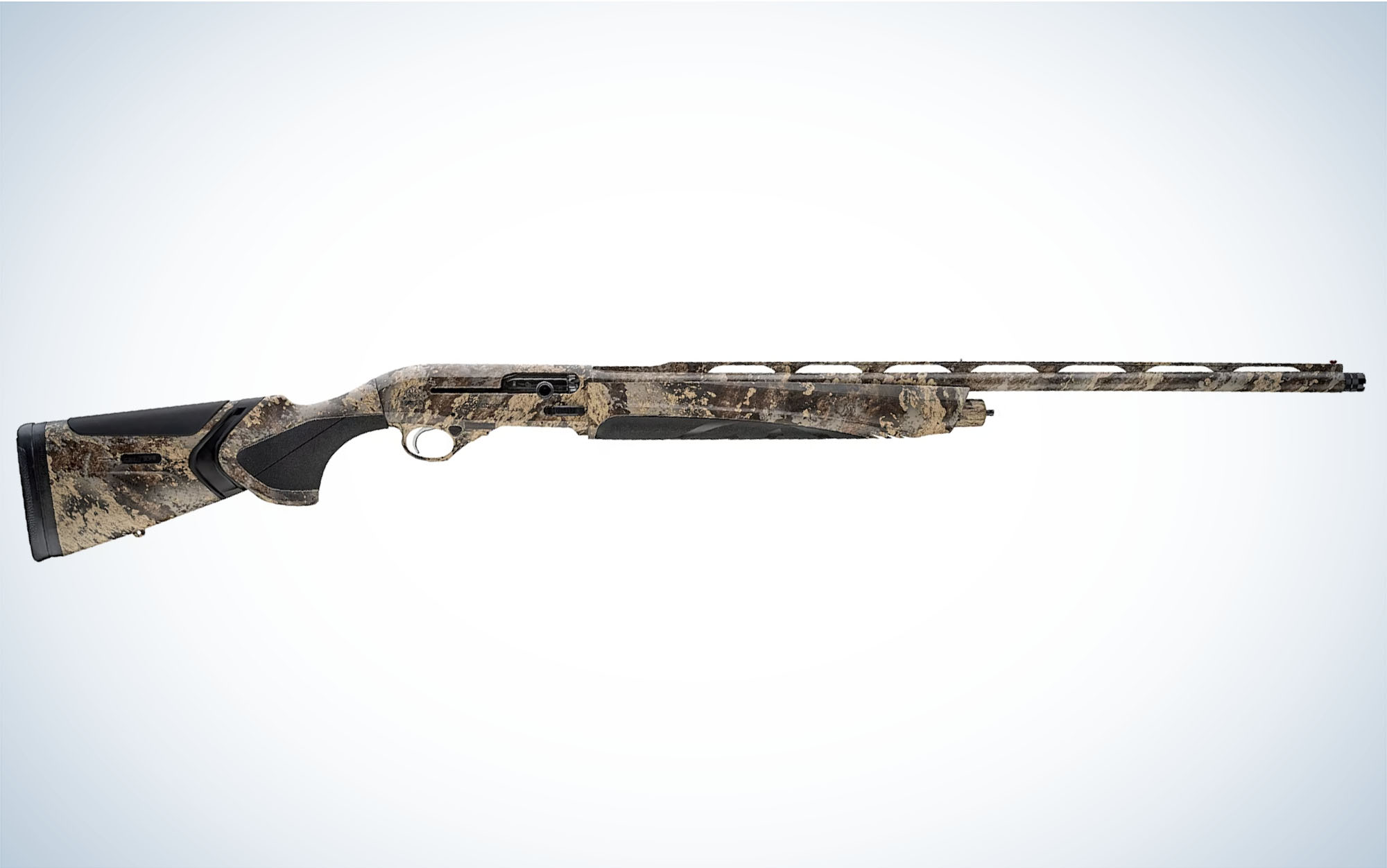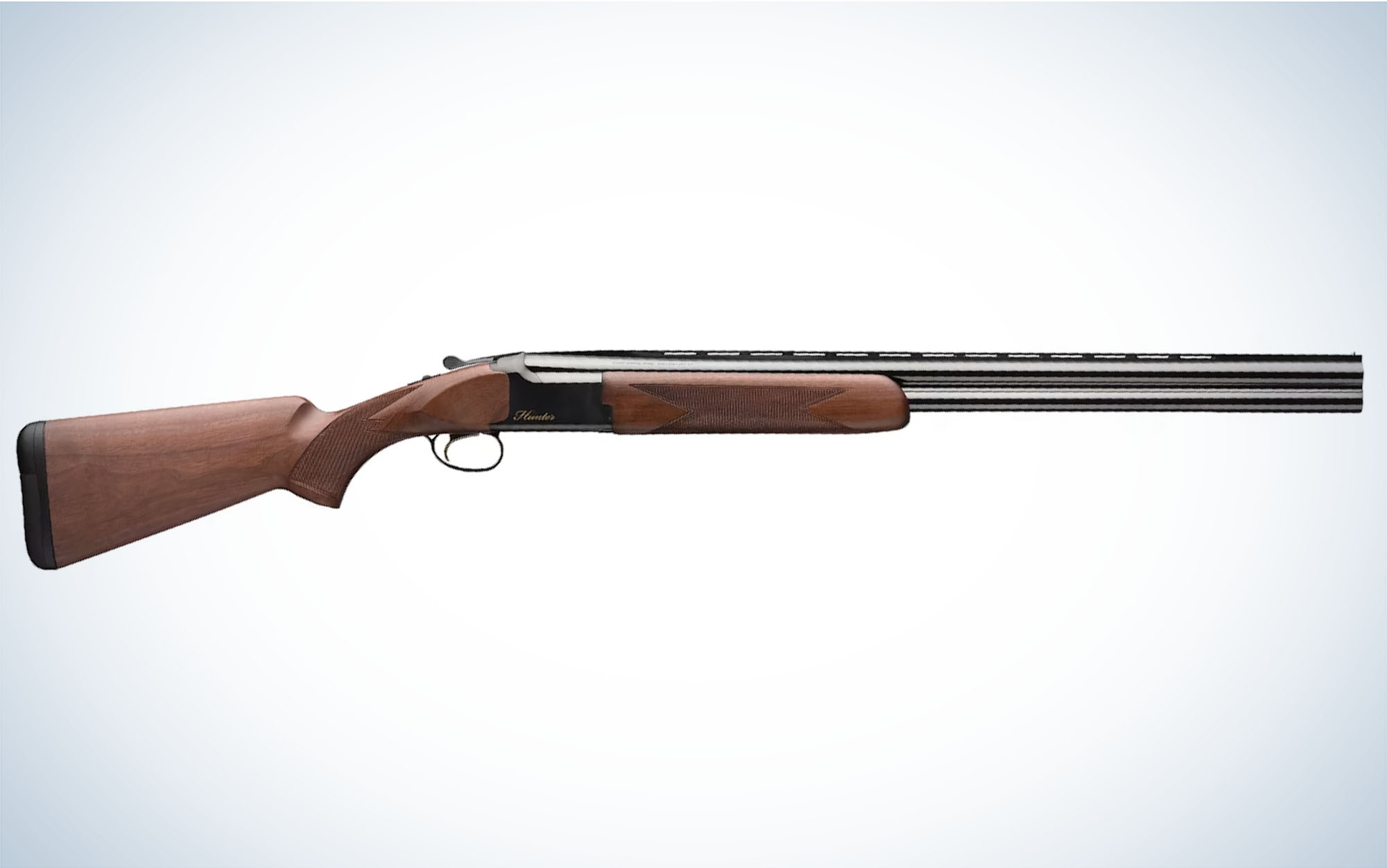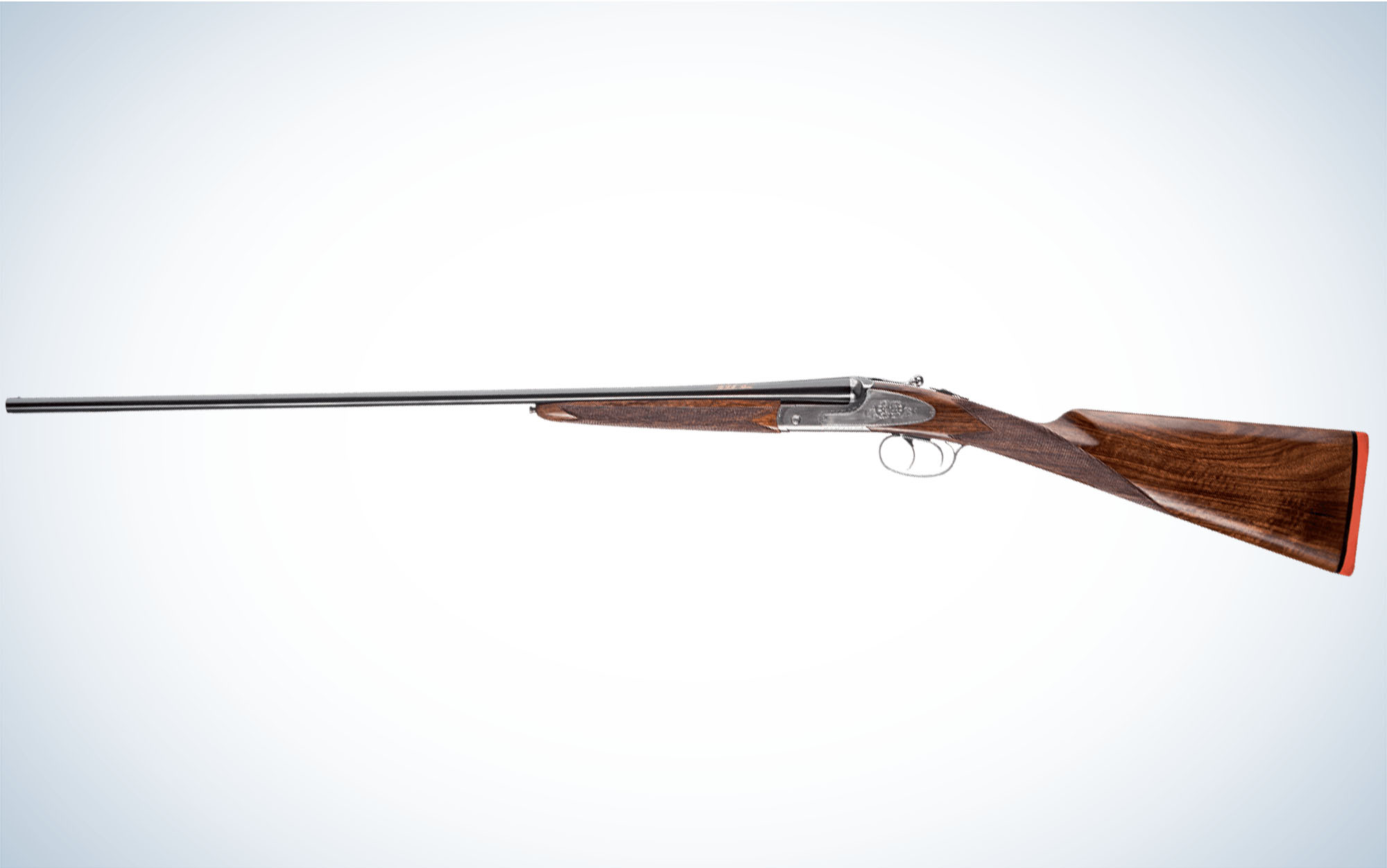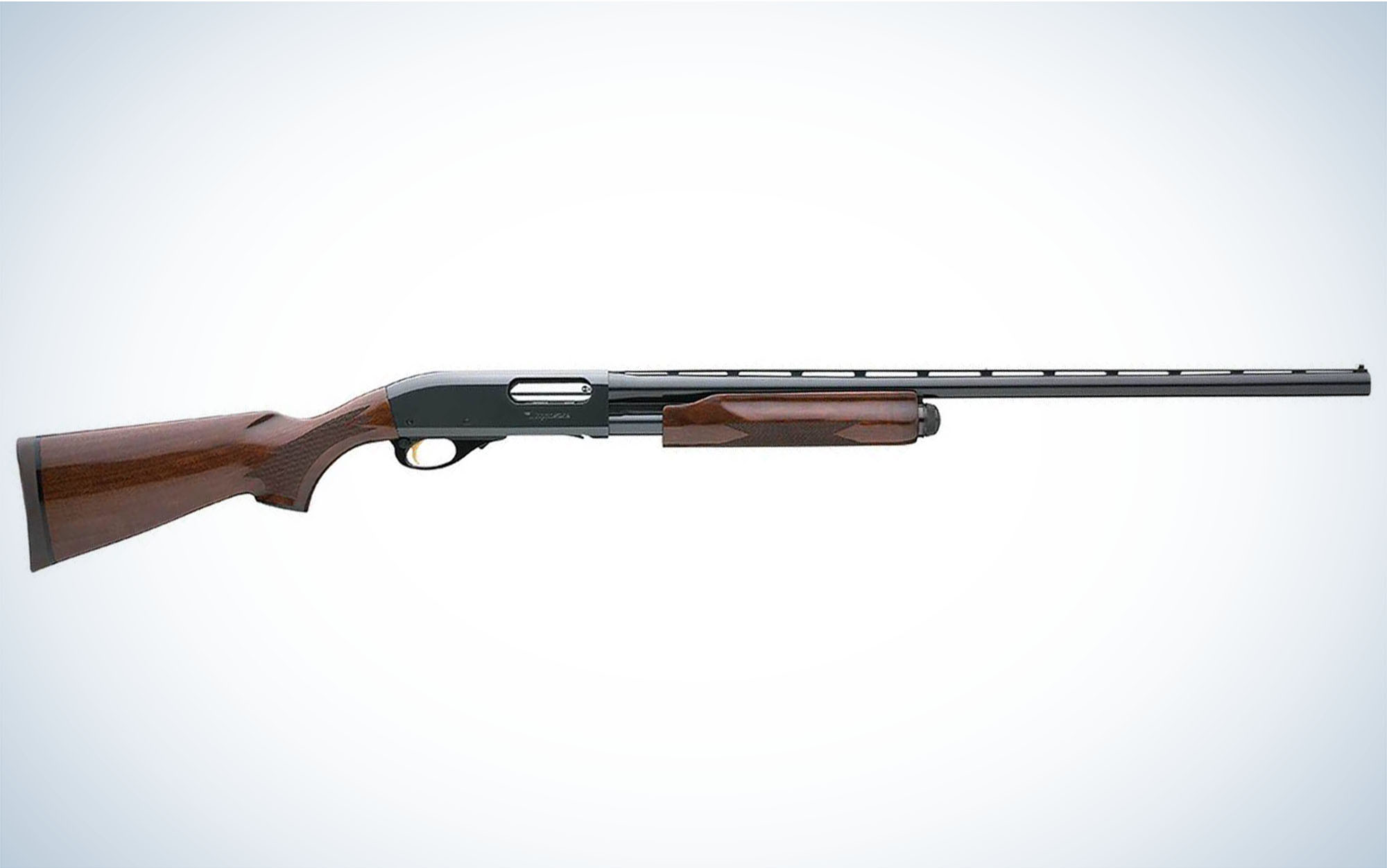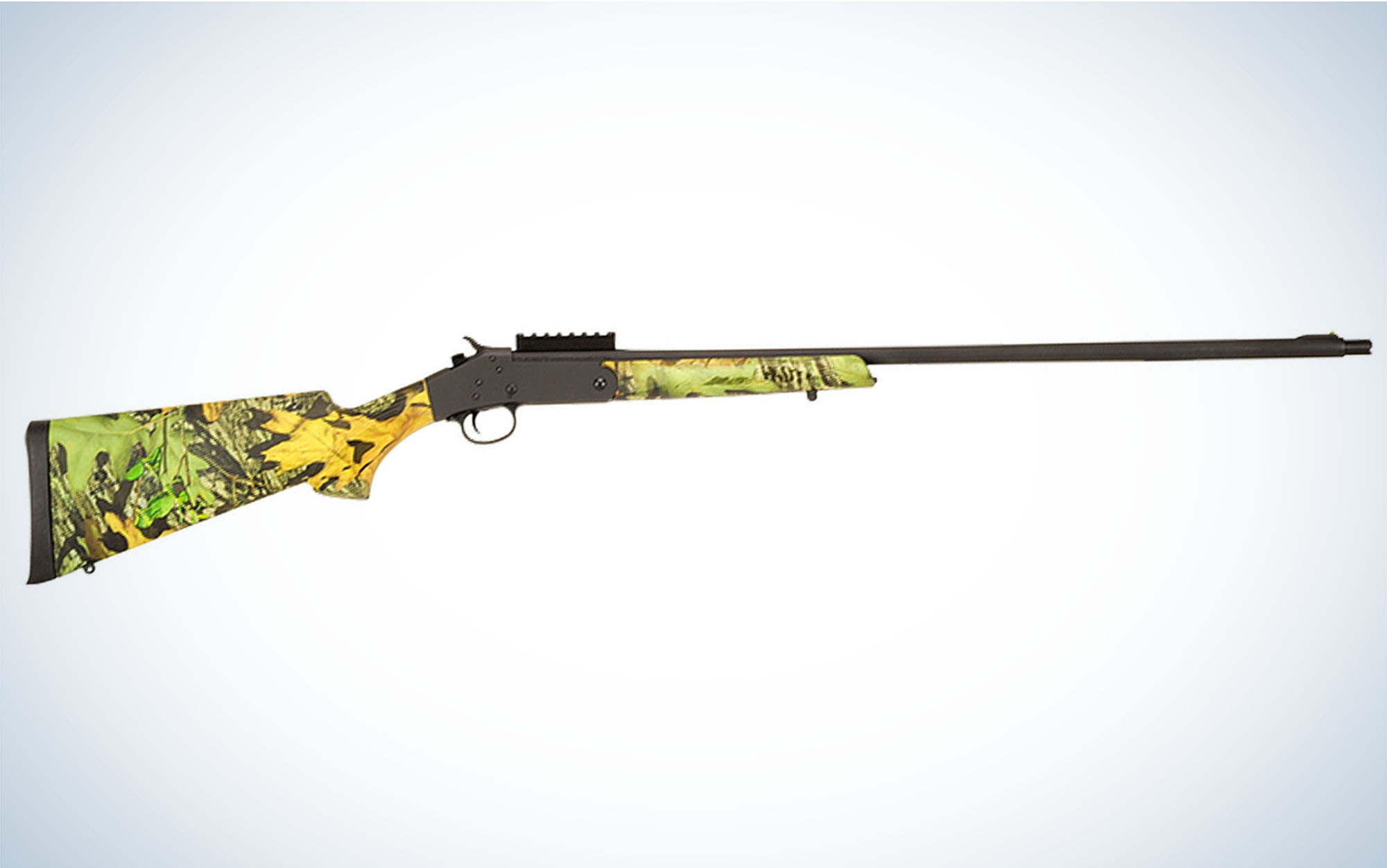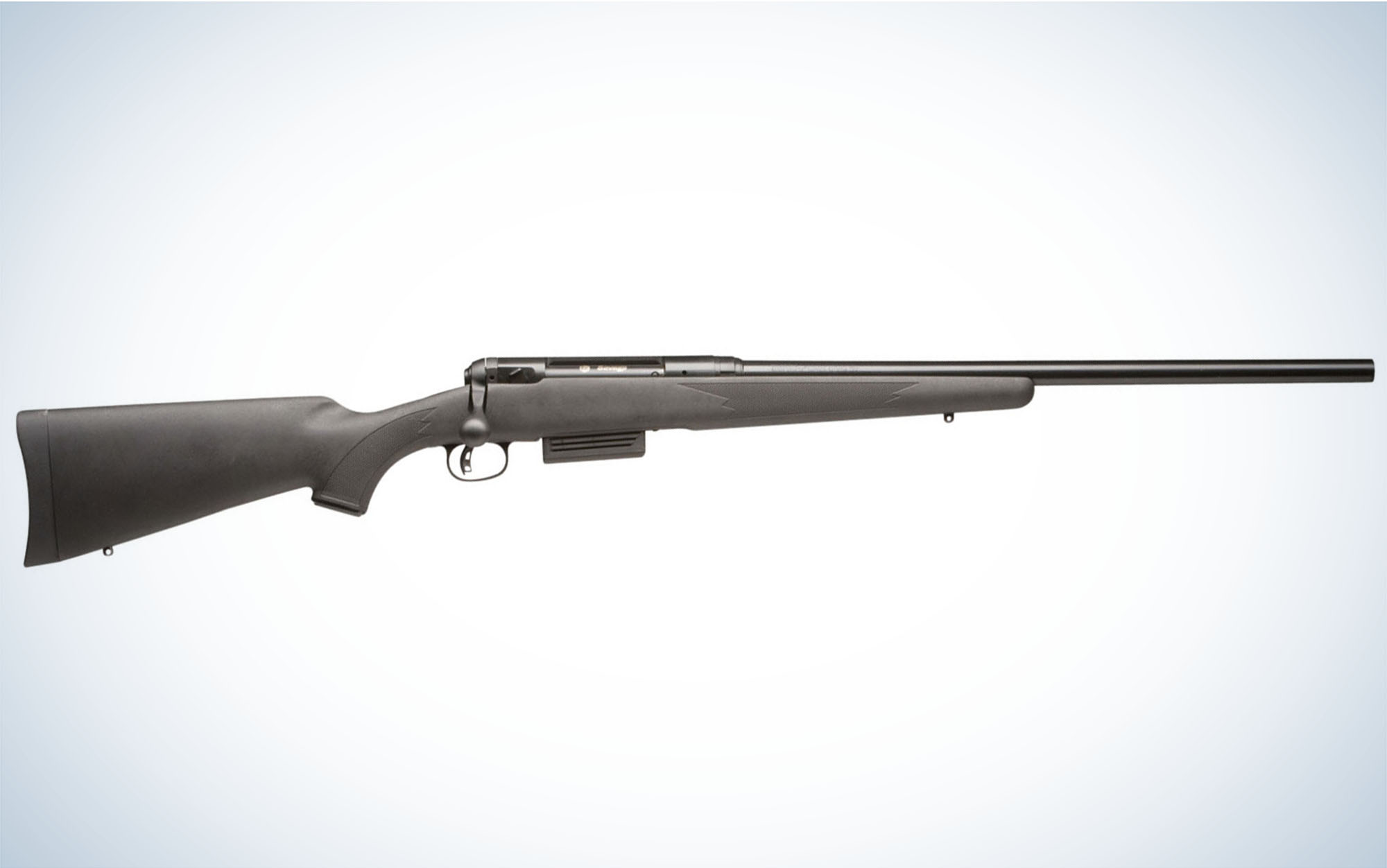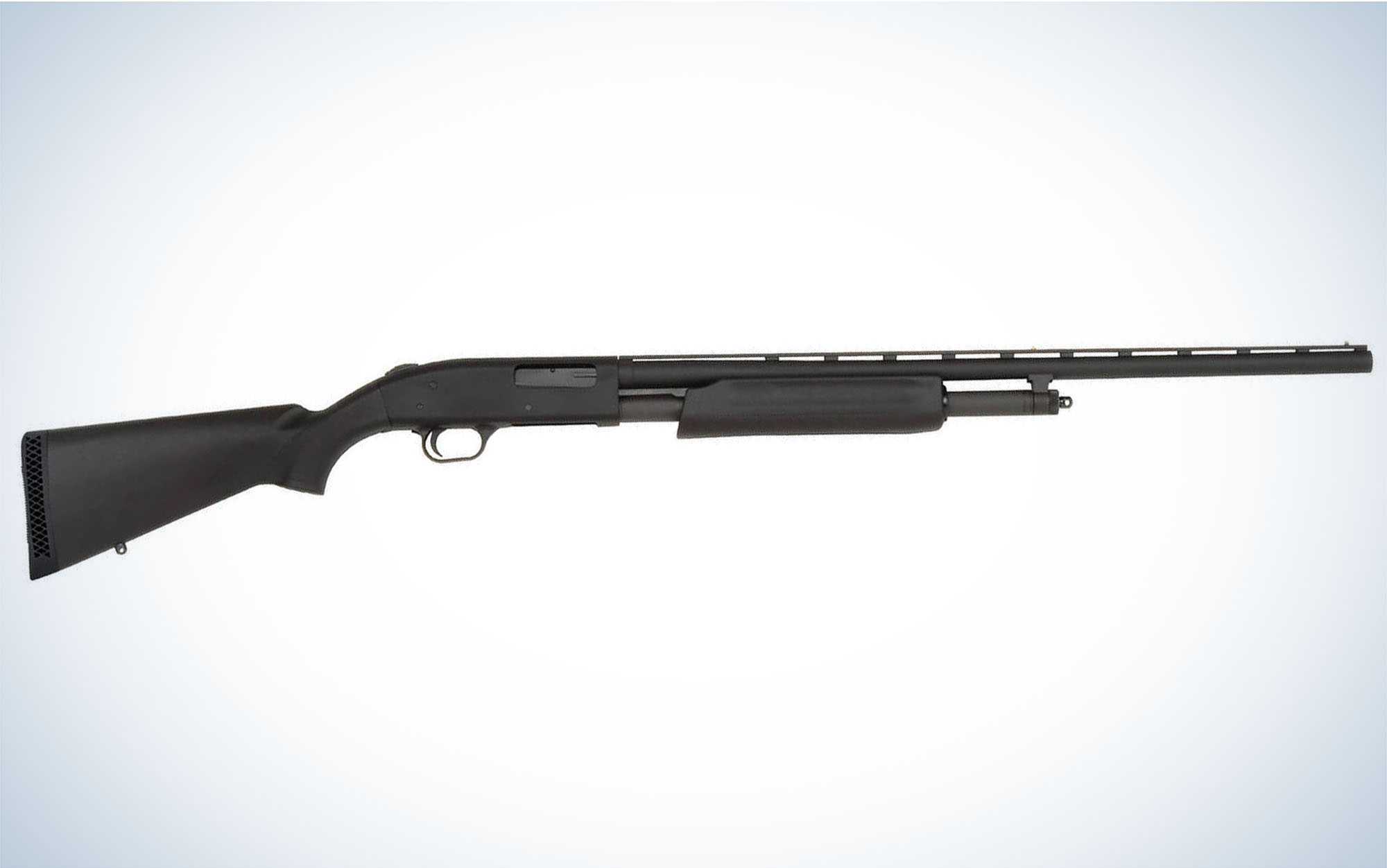We may earn revenue from the products available on this page and participate in affiliate programs. Learn More ›
Published Mar 2, 2023 2:53 PM
The 20-gauge shotgun might be more popular now than it ever has been. From a historical perspective, it would be difficult to say that a larger number of hunters shoot a 20 today than a generation ago because of the overall decline in hunter participation, but there is no doubt that the best 20 gauge shotguns have enjoyed a resurgence in the last decade. That’s due to a wider availability of premium shot material, like bismuth and tungsten.
The number of bismuth offerings (and Kent Tungsten-Matrix) have brought old firearms back into the fold, sub-gauges in particular. TSS loads have also energized the 20-gauge because hunters can kill ducks and turkeys at the same distances their fathers did more than 30 years ago with a 12-gauge. Plus, the increased performance of sabot-style slugs made the 20 a favorite of deer hunters in traditional shotgun-only states before straight-wall rifles became legal. Coupled with the fact it’s a lighter platform and typically produces less felt recoil than a 12, it’s not surprising more hunters and shooters are opting for a 20-gauge shotgun.
How I Picked the Best 20 Gauge Shotguns
It’s impossible to shoot every 20-gauge shotgun ever built to determine which models are “best.” However, I do have extensive experience shooting a multitude of 20-gauge shotguns. I coupled that knowledge with a number of books I have read dedicated specifically to shotguns, 15 years worth of interviewing shotgun and shotshell manufacturers, and hunting with some of the best shooters in the world to arrive at this list of best 20-gauge shotguns. All of the guns in the list have proven themselves in the field. You will find that most of these sub-gauges are under $3,000, so they are attainable for most shooters. There is one exception, the RFM Venus, which is a premium side-by-side you can customize in many of the same ways a bespoke shotgun is fitted to an individual shooter, so you’ll pay a little extra for those features.
Best 20 Gauge Shotguns: Reviews & Recommendations
Best Overall: Fausti Caledon
Key Features
- Action: Four Locks
- Capcity: 2
- Chamber: 2¾- and 3-inch
- Barrel type: Chrome-lined steel
- Barrel length: 26-, 28-, or 30-inch
- Chokes: C, IC, M, IM, F
- Sights: Metallic front bead
- LOP: 14½ inches
- Weight: 5.8 to 6.2 pounds
- Cost: $2,200
Pros
- Incredible action strength coupled with some of the most precisely manufactured shotgun barrels in the world
Cons
- Fausti shotguns can be hard to find, but that’s improving
Fausti divides its shotguns into two categories—Core and Boutique. The former are less ornate and less expensive, which is the category the Caledon—Fausti’s introductory shotgun—falls into. The latter are built for beauty and functionality. But if you don’t care about fancy side plates and engravings, save the money and buy this Italian over/under. I’ve handled many other break-action shotguns in this price range and none of them come close to the Caledon. Transitions between the steel receiver and barrels to the walnut stock and fore-end are flawless. There is no stiffness in the action when you open it for the first time; not the case for any out-of-the-box over/under I have tested at this price point. The four-lock system strengthens the action so that the gun will not break down after firing countless rounds over a lifetime of shooting.
Fausti, which celebrates its 75th anniversary this year, builds all of its firearms in-house and has modernized its factory within the last decade. Three sisters—Barbara, Giovanna, and Elena—took the business over from their father Stefano and have stylishly branded Fausti in a manner only the Italins can. The look of their guns is very European. They have sleek lines and precision engineering that are complimented by a beauty few other gun manufacturers can match. And Fausti barrels are world-renowned, which is why several gun makers buy their barrels from Fausti.
Best Inertia-Driven Semi-Auto: Benelli M2 Field
Key Features
- Action: Semi-automatic
- Capcity: 3+1
- Chamber: 3-inch
- Barrel type: Crio steel
- Barrel length: 24-, 26-, 28-inch
- Chokes: C, IC, M, IM, F
- Sights: Red bar front
- LOP: 14⅜ inches
- Weight: 6 pounds
- Cost: $1,399
Pros
- Upgraded bolt-system that eliminated the “Benelli click”
Cons
- Inertia guns like the M2 sometimes struggle to cycle light target loads
If you’re a duck or turkey hunter, there are few auto-loaders that rival the Benelli M2 Field, which is one of the best 20-gauge shotguns of all time. The shotgun has been a workhorse since it debuted in the late 1980s and is a favorite among guides across the country due to its light weight and reliability. Benelli improved the functionality of the M2 this year by updating the bolt system with a small internal spring that ensures the shotshell is always sent into battery—the Ethos and Super Black Eagle 3 have the same bolt. Benelli shotguns use a rotating bolt head, and previous to this spring design, the bolt head would sometimes not fully rotate to ensure a solid lockup with the shotshell. When that occurred the shooter would hear a click when they pulled the trigger—the sound of the firing pin striking nothing—and the shell would not fire. That’s no longer at issue.
Benelli did take a risk by changing the ergonomics of the M2 in 2023. The biggest difference is the fore-end is tapered, and not as skinny as it was on the original model. The new M2s also don’t have all of the same recoil reduction technology in the stock that previous models did. This is to keep the price down and create a clear delineation between the M2 and pricier SBE 3, which is also offered in 20 gauge (The M2 pictured above has the recoil reduction technology included). The jury is still out on whether Benelli loyalists like the “upgrade.” Turkey hunters will certainly appreciate the new 24-inch barrel option. The only way to get an M2 20-gauge in that barrel length before was to buy the Performance Shop variant, which costs $3,000, more than double the Field.
Best Gas-Driven Semi Auto: Beretta A400 Xtreme Plus
Key Features
Action: Semi-automatic
- Capcity: 2+1
- Chamber: 3-inch
- Barrel type: Steelium Plus
- Barrel length: 28 inches
- Chokes: C, IC, M, IM, F (extended)
- Sights: Red bar front
- LOP: 14¼ inches
- Weight: 6.72 pounds
- Cost: $1,929
Pros
- Combination of a gas-driven operating system and Kick-Off recoil reduction makes this gun a joy to shoot
Cons
- It’s an almost $2,000 auto-loader that costs $500 more than the Benelli M2
When you build one of the best 12-gauge semi-auto shotguns in the world, it makes sense to deliver it in a 20 as well, which is exactly what Beretta has done with the A400 Xtreme Plus. There are a few subtle upgrades to the 20 that the 12 doesn’t have, including a pro series lifter the Italian gunmaker first designed into its 1301 tactical shotgun. Once you chamber a shotshell, the load gate remains in the up position, making it easier to slide the next two shells into the magazine tube. Beretta also incorporated a steelium barrel, typically reserved for their high-end over/unders, into the A400. The forcing cones are 12.5 inches long to improve patterns downrange. Beretta’s Kick-Off recoil system, a series of hydraulic shock absorbers in the buttstock and pistol grip, along with a micro-core recoil pad, make felt recoil a non-issue even with heavy turkey ammo. A stepped rib will lead your eyes to a red bar front sight, and the A400 comes with five Optima extended chokes (C, IC, M, IM and F).
There are rubberized grips in the palm swell of the stock and fore-end. More shotgun makers are incorporating this feature into their synthetic auto-loaders and it’s a game changer for anyone who hunts in foul weather because of the amount of added grip it offers. You never have to worry about the gun slipping, even when you’re shooting it. A shim kit is included for adjustment of the 14¼-inch stock. One thing that is missing from the 20-gauge is the easy, quarter-turn fore-end cap featured on the 12-gauge variant. With the 20, you have to unscrew it like a bottle cap.
Best Over/Under: Browning Citori Hunter Grade I
Key Features
- Action: Boxlock
- Capcity: 2
- Chamber: 3-inch
- Barrel type: Chrome-lined steel
- Barrel length: 26- or 28-inch
- Chokes: IC, M, F
- Sights: Silver bead
- LOP: 14¼ inches
- Weight: 6.9 pounds
- Cost: $2,180
Pros
- It’s a relatively affordable, well-made over/under you can pass down to the next generation of hunters
Cons
- The Hunter Grade I only comes with three chokes, so you have to buy extras if you want to have a more versatile shotgun.
It’s nearly impossible to have a best shotguns list without including John Moses Browning. The Citori was introduced in 1973 as a less expensive replacement to JMB’s famed Superposed. At the time, many shooters scoffed at discontinuing the Belgian-made Superposed for Miroku’s Citori—the Japanese gunmaker still continues to produce the Citori for Browning. But more than a million of the guns have been built over the last 50 years, and the Citori has etched its own legacy in double gun history. It has enjoyed a half-century run because Browning combined quality with affordability and over/under loyalists quickly took notice. There are few break-actions that cost less than $2,500 with the kind of clean wood-to-steel finish and superior functionality the Citori exhibits. You can buy over/unders for cheaper, but it’s doubtful they will last long enough to hand down to your children, and then your children’s children. The Citori becomes a family heirloom the moment you purchase it.
One of the more basic Citori’s in a lineup of countless variants, Browning’s Hunter Grade I is built on a boxlock action. It doesn’t feature any fancy side plate designs or receiver scroll work, but does have almost everything else you need in a 20-gauge. It’s light enough at 6.9 pounds, has a vent rib barrel, checkered fore-end and pistol-grip stock. It does have an inertia trigger, so if the first shotshell does not fire, neither will the second. This model only comes with IC, M, and F flush-fitting chokes. It would be ideal to have a five-choke set that included cylinder and light modified come standard, so shooters could take full advantage of the 20-gauge’s ballistic capability. But you can always buy those separately.
Best Side-by-Side: RFM Venus
Key Features
- Action: Boxlock
- Capcity: 2
- Chamber: 2¾- or 3-inch
- Barrel type: Demi-bloc
- Barrel length: 25 to 30 inches
- Chokes: Fixed of five interchangeable
- Sights: Brass or ivory bead (or no bead)
- LOP: Custom
- Weight: 6 pounds
- Cost: $3,299
Pros
- RFM offers a fully customizable side-by-side for a fraction of bespoke shotgun prices
Cons
- Customizing a gun and delivering it to the shooter takes longer than buying a side-by-side off the shelf
Italian gunmaker RFM provides a unique service, building custom break-actions that are significantly less expensive than bespoke shotguns. Buying a bespoke gun is also a much more lengthy process than ordering a custom side-by-side like the Venus, because a bespoke firearm is specifically fit to your exact body measurements. If you don’t have the time or money to devote to a bespoke shotgun, RFM’s à la carte shotguns are your next best option. The Venus can be purchased through Upland Gun Company and is built standard on a boxlock action and demi-bloc barrels. The base model includes hand engraved receiver, checkered stock, and fore-end, an English grip stock, double triggers, extractors, concave barrel rib, custom stock length, fixed chokes, and a hard case.
It’s up to the shooter what else they want to add to the Venus. You can select from multiple wood, Cerakote, and synthetic finishes, barrel lengths (from 25 to 30 inches), double, single, or single-selective triggers, ejectors or extractors, removable chokes, engraved side plates…the list goes on. Every upgrade costs a few hundred dollars more, but you get to decide how much the gun will cost, and making your selections is all part of the fun.
Best Pump: Remington 870 Wingmaster
Key Features
- Action: Pump
- Capcity: 3+1
- Chamber: 3-inch
- Barrel type: Chrome-lined steel
- Barrel length: 26- or 28-inch
- Chokes: IC, M, F
- Sights: Twin bead
- LOP: 14 inches
- Weight: 6.5 pounds
- Cost: $900
Pros
- Unmatched durability and reliability in a pump-action shotgun
Cons
- This gun is no longer in production, so you’re going to pay almost $1,000 for a used pump
Many will say the Mossberg 500, Browning BPS, or the host of pump-action shotguns that came before the Remington 870 Wingmaster debuted in 1950 are just as good or better than this repeater. But none of those guns sold over 11 million units, and until they do, the 870 stands alone. The receiver is built from a solid block of billet steel and the bolt operates on a pair of dual-action bars that slide forward and backward as the shooter pumps the fore-end to eject a spent hull and deliver a new round into the chamber. A checkered walnut stock and fore-end with satin finish blend seamlessly into the steel receiver. The 3-inch 870 is easy to break down and clean. Simply unscrew the fore-end cap and the barrel and fore-end can be removed. Most Wingmasters never fail on account of being dirty, but if you do drop this pump in the mud or get it soaked, you’ll want to do a quick field strip and wipe down. You don’t want that blued metal to rust.
Best Single Shot: Stevens 301 Turkey
Key Features
- Action: Break-action
- Capcity: 1
- Chamber: 3-inch
- Barrel type: Chrome alloy steel
- Barrel length: 26 inches
- Chokes: Extra-full
- Sights: Raised single bead
- LOP: 13.8 inches
- Weight: 6 pounds
- Cost: $227
Pros
- Built for turkey hunters, but can be used for multiple pursuits and training.
Cons
- Hammer guns can be tricky for new shooters.
Sub-gauge single shots, like the Stevens 301, have become popular among serious turkey hunters in the last few years due to their light weight, affordability, and the challenge of knowing you only have one shell to kill a strutting spring tom. A short length of pull (13.8 inches) and barrel length (26 inches) make this a very maneuverable gun for the turkey woods. The 301 has a removable top rail for mounting an optic, allowing shooters to be more precise with a red dot or scope. This is a great option for new shooters. They can acquire the target quickly and have confidence that the payload will be sent in the direction of their aim-point. Since this is a hammer gun, it’s important to know that there is no cross bolt or tang-mounted safety. When the hammer is cocked, the gun is “off safe.” To return the gun to safe, you must either fire it or ease the hammer backward with your thumb, lightly press the trigger, and slowly move the hammer and trigger forward. The 301 only comes with an extended turkey choke, but there are plenty of aftermarket options if you want to use the gun for other shooting pursuits.
Best Slug Gun: Savage 220
Key Features
- Action: Bolt
- Capcity: 2+1
- Chamber: 3-inch
- Barrel type: Carbon steel (rifled)
- Barrel length: 22 inches
- Sights: None (Picatinny rail included)
- LOP: 13¾ inches
- Weight: 7.34 pounds
- Cost: $699
Pros
- Ideal weight for a 20-gauge slug gun to keep you accurate and mitigate felt recoil.
Cons
- It’s a little less relevant with the rise of straight-wall rifles in traditional slug gun states.
Now that they are legal, straight-wall rifles are all the rage for whitetail hunters in many traditional slug gun states. But for hunters still in shotgun-only zones, the Savage 220 is one of the best-20 gauge shotguns for deer hunting. The bolt-action 220 offers superb accuracy if you pair it with a quality scope. Depending on what sabot you shoot through the 220’s rifled barrel (24:1 twist), the Savage has the ballistic capability to hold its own out to 200 yards against most straight-wall deer rifle/cartridge combinations. However, you will likely be more accurate and consistent with a straight-wall.
The 220 is built with an adjustable Accu-Trigger so you can tweak the creep and pull weight of the trigger to fit your shooting style. The stock can also be adjusted for length of pull and comb height. There is a two-round detachable box magazine should you need follow-up shots, and the weight of the gun (7.3 pounds) is heavy enough to keep you steady when a deer walks within range. That weight will also help dampen recoil, but the gun is not so heavy that you feel like you’re lugging a boat anchor to the treestand every morning.
Best Value: Mossberg 500 Hunting All-Purpose Field
Key Features
- Action: Pump
- Capcity: 5+1
- Chamber: 3-inch
- Barrel type: Matte blue steel
- Barrel length: 26 inches
- Chokes: IC, M, F
- Sights: Dual bead
- LOP: 13.87 inches (fixed)
- Weight: 7 pounds
- Cost: $504
Pros
- Versatile shotgun that can be used for hunting, clay shooting, or personal defense
Cons
One of the main reasons the Mossberg 500 has rivaled the Remington 870 for so long is due to its versatility. There are so many variations of the 500 that if you buy one, you can swap in a shorter barrel to make it a home-defense gun or a longer barrel for trap shooting. The receiver is drilled and tapped to add a top rail (not all 870s included this feature until recently), and the safety is tang-mounted, which caters to both left and right-handed shooters. Remington’s 870 has a cross bolt safety.
The 500 is slightly more inexpensive than Remington’s Wingmaster and new Fieldmaster, but it’s also not quite as well made. There is a little more “rattle” in the 500, which means that it doesn’t run as smooth as an 870. However, when we tested the 12-gauge version of this gun a few years ago to decide which pumps and semi-autos were the best duck hunting shotguns, it narrowly lost to the 870, mostly because the fore-end didn’t slide back-and-forth with ease. But consider that militaries all over the world rely on the Mossberg 590A in combat, so it is a proven platform.
FAQs
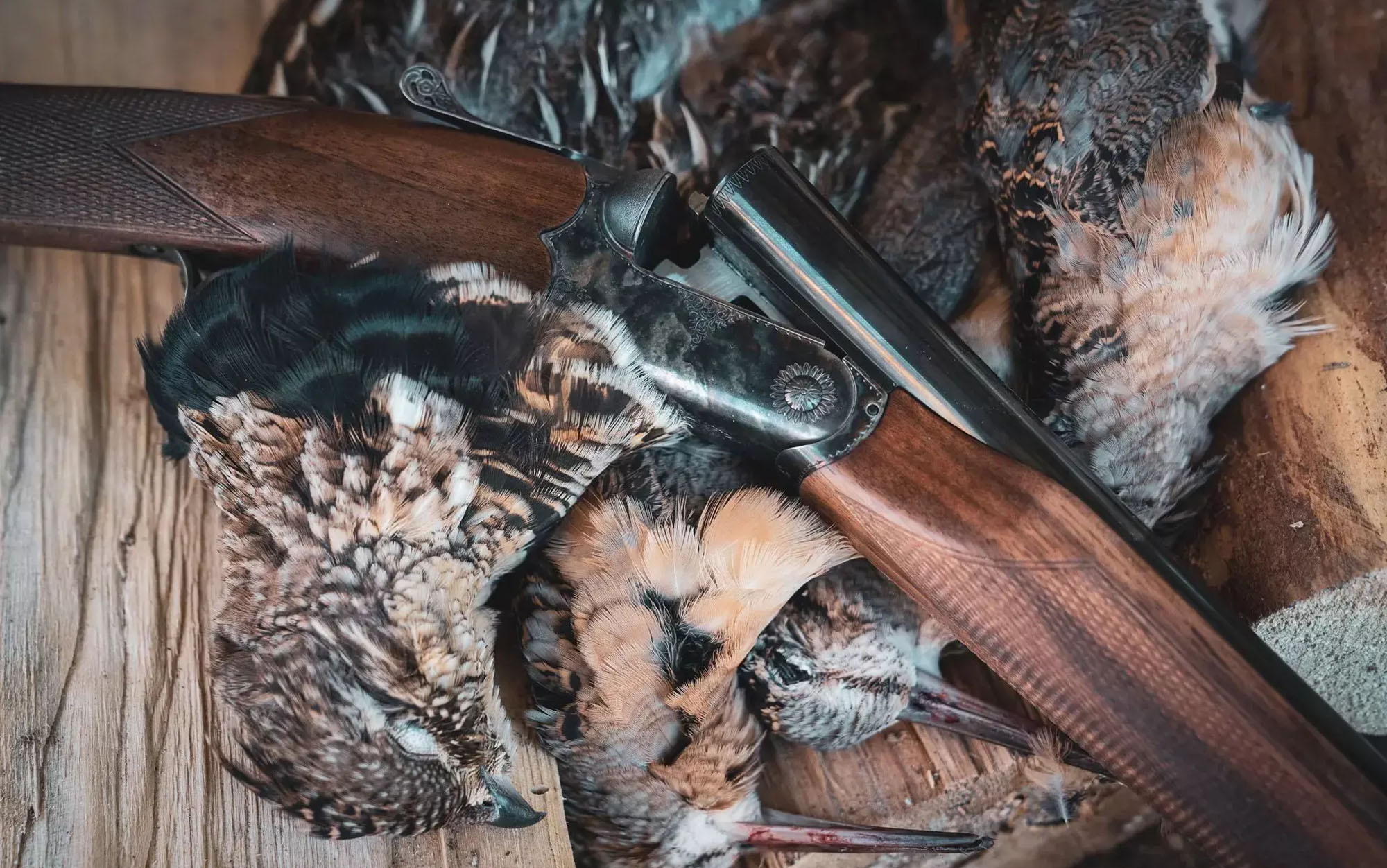
Q: Is the 20-gauge as effective as the 12-gauge?
The best 20-gauge shotguns can be used for all the same hunting pursuits and clay shooting sports as a 12-gauge. But 12-gauge shotshells can hold more powder and heavier payloads because the bore diameter is larger (.729) than a 20-gauge (.615), so the 12 holds a ballistic edge over the 20. That said, there are fewer and fewer hunting scenarios where you need a 12 due to the advancement of shotshell technology, specifically TSS. Of course, tungsten costs significantly more than steel and lead, the two most common metals used in shotshells. Because of the large price gap, the 12-gauge remains the most popular bore size, but the 20 is on the rise.
Q: Does a 20-gauge produce less recoil than a 12-gauge?
There is a misconception that the smaller the gauge, the less recoil it produces. That’s not the case. You have to consider the weight of the shotgun, payload weight, and muzzle velocity of the shotshell to determine recoil. If you shoot a light 20-gauge with a heavy payload, it can produce more recoil than a heavy 12-gauge with a light payload. However, most 20 gauges I have shot produced less felt recoil than the 12s, though there have been a few that hammered my shoulder.
Q: Is the 20-gauge a good choice for new shooters?
In a word, yes. In fact, a gas-driven 20-gauge is probably the best option for a new or young shooter. Most inexperienced shooters will be comfortable carrying a 20-gauge because it’s lighter than a 12. A gas gun will make recoil a non-issue if you keep payloads to 1- or ⅞-ounce. This allows the shooter to practice longer and more often, but also makes it easier to stay on the gun when firing multiple rounds. Heavy recoil and muzzle jump require all shooters to recover and reposition their cheek to the stock. Experienced shooters do it quickly without a second thought. But it can be a challenge for newbies to accept that recoil and move to the next target, especially if they are smaller in stature.
Why Trust Outdoor Life?
Since 1898, OL has been a leading authority in testing and reviewing hunting gear, fishing tackle, guns and shooting equipment, and much more. We have more than a century-long history of evaluating products, and we’re now bringing that expertise to online reviews. Our editors are experienced outdoorsmen and women, and most importantly, we’re trained journalists. We prioritize field testing and objective data when reviewing products. We conduct interviews with gear manufacturers and engineers as well as outdoor experts so that our readers have an understanding of how and why a product works—or doesn’t.
Advertising does not influence our gear reviews and it never will. While we always focus our coverage on standout products—because we want our readers to be aware of the latest and greatest gear—we also cover the flaws and quirks of any given product.
Final Thoughts
It’s likely the best 20-gauge shotguns will continue to rise in popularity. It could presumably surpass the 12-gauge one day if shotshell makers can ever find a way to make premium non-toxic options, like TSS and buffered bismuth, more affordable. Many hunters have already shelved their 12s in favor of the 20, which makes sense because the sub-gauge is easier to carry afield and can sufficiently kill any game effectively so long as you don’t take shots at extended ranges. The only time I want a 12-gauge in hand over a 20 is when longer shots are required. Otherwise, I’m happy to go with the light platform the 20-gauge offers.

